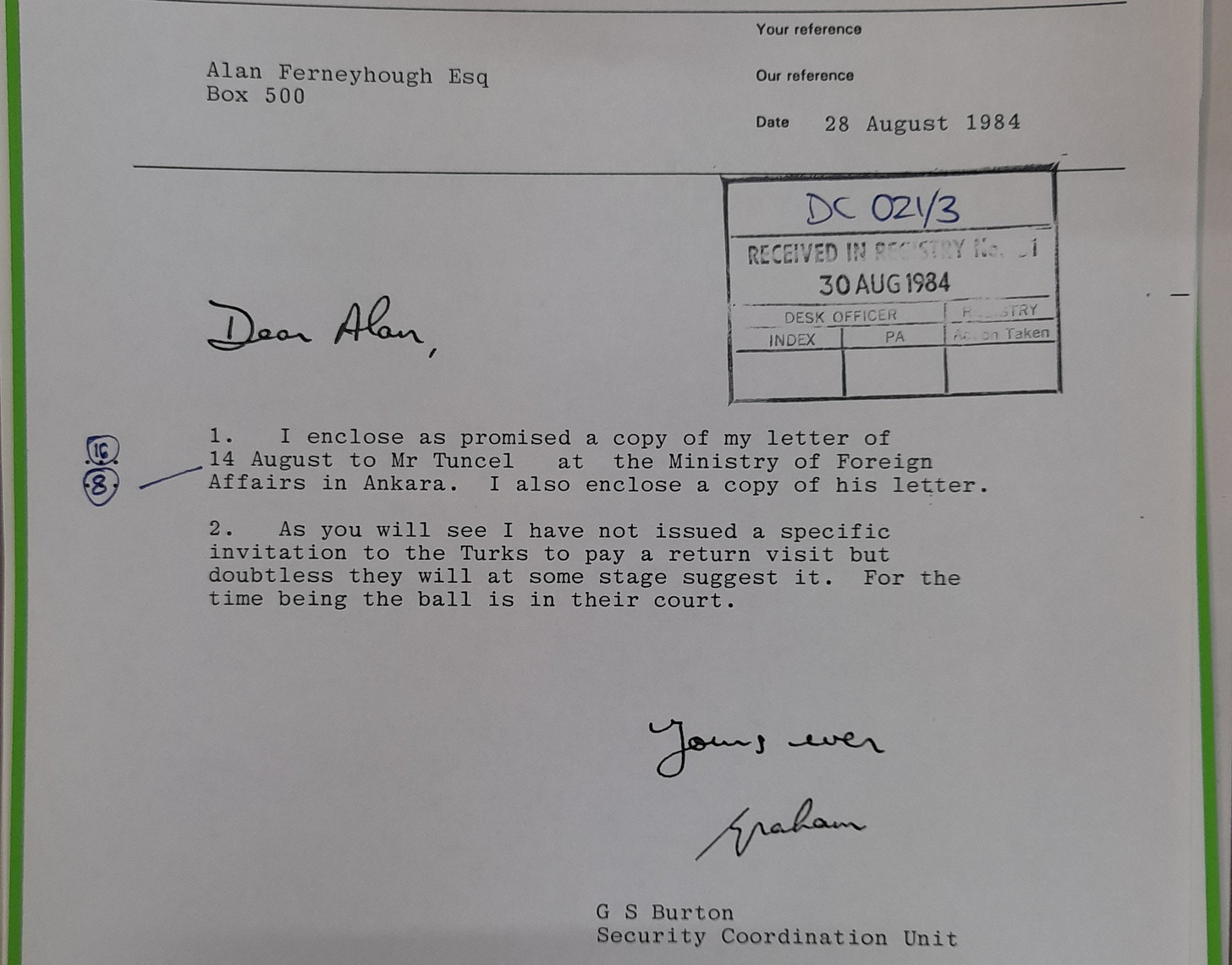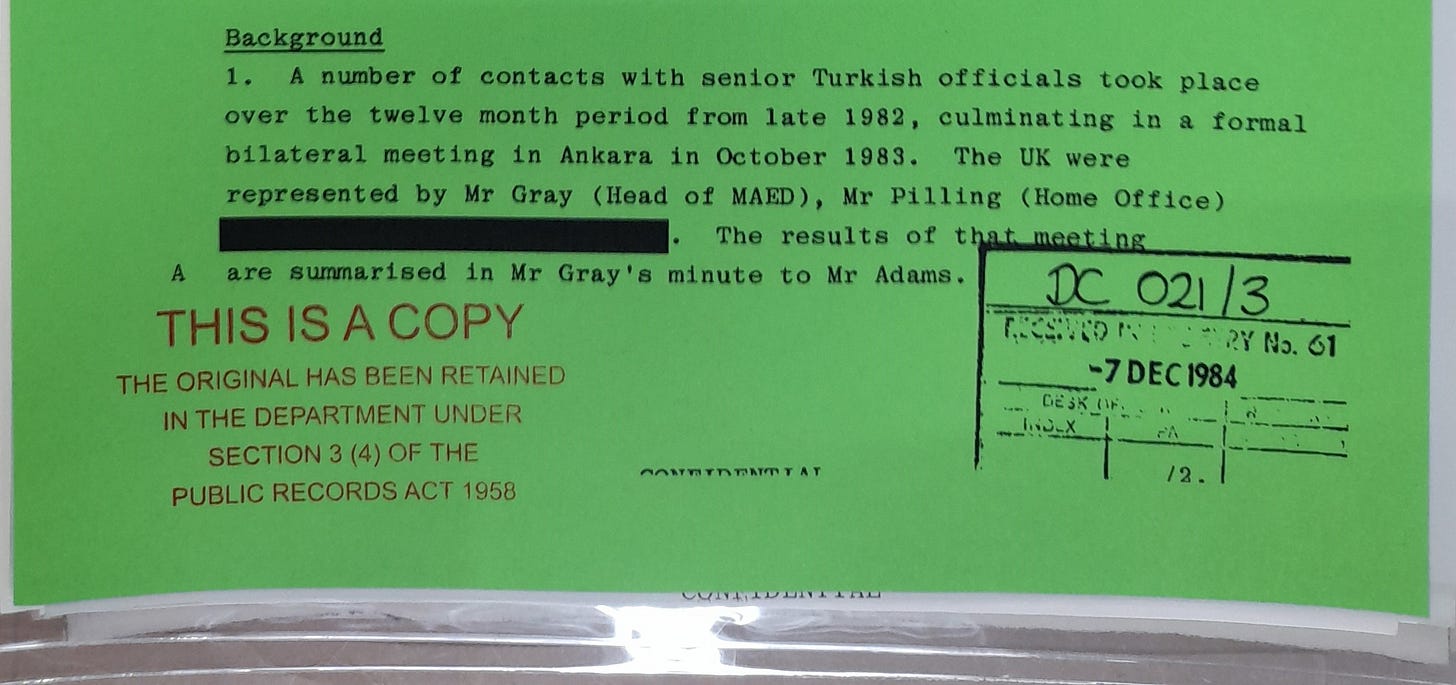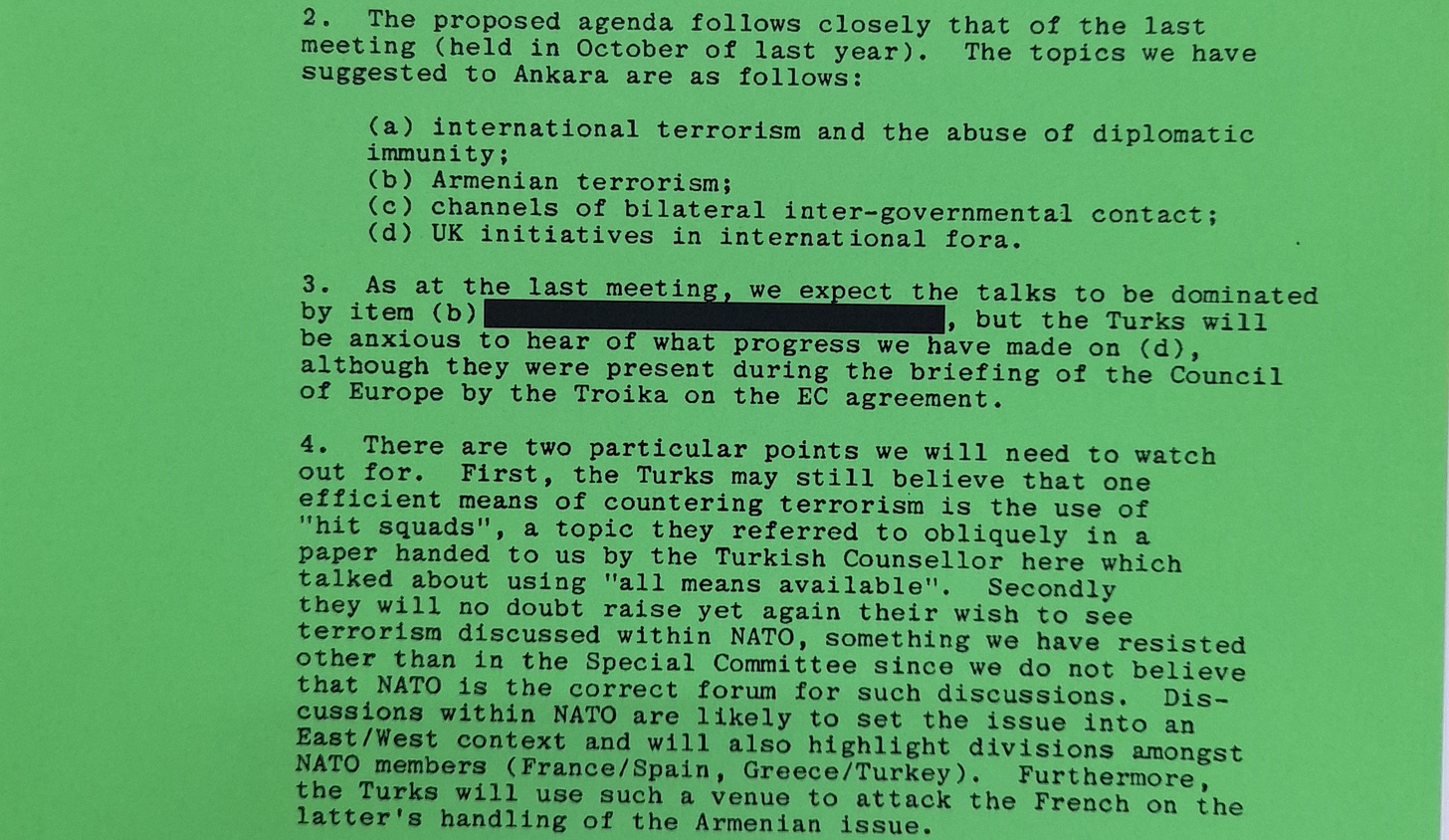'All means available' - Counter-terrorism liaison with Turkey in the 1980s
The Foreign Office security files show how UK-Turkish intelligence contacts developed in the 1980s despite military repression in the wake of the 1980 coup.
In yesterdays post, I used Foreign Office file FCO78/10 as an example of the kind of intelligence snippets that turn up in the open archives. Here is another, possibly more consequential example from the same file.
The official history of MI5 confirms that the service used the Box 500 postal address (ref 1, p.569). We might therefore infer that Alan Ferneyhough was an MI5 officer.
There is other evidence that this was the case. Ferneyhough appears in an MI5 order of battle for the early 1980s, published in Stephen Dorril’s The Silent Conspiracy (ref 2, p.486). This states that Ferneyhough was the head of F3 section, responsible for terrorism, other than Irish terrorism. Ferneyhough’s involvement in correspondence about counter-terrorist liaison with Turkey is good evidence that this was correct.
Such liaison would have particularly sensitive at the time, only a few years after the Turkish military coup of 1980, whose leader, General Kenan Evren, was confirmed as president by a plebiscite in 1982. A civilian Prime Minister was appointed in 1983, after a parliamentary election which took place under heavily constrained conditions.
The prospect of democratisation presumably formed the background to the engagement between British and Turkish security officials. However, FCO178/11 records that the first meeting took place before the November 1983 election.
The redaction presumably signifies that a British intelligence or security representative was in attendance, as do similar black marks in correspondence about the following bilateral in London in December 1984.
Another document does give the full British representation, perhaps reflecting a change in team, or simply the kind of inconsistent redaction which happens surprisingly often.
The Turkish delegation included a member of the National Intelligence Organisation, often known by its Turkish acronym MIT.
The Turks’ main preoccupation was Armenian terrorism and they had some alarming ideas about dealing with it.
The British were not the only ones to pick up on the Turks’ hardline plans. A 1983 CIA paper on the Armenian terrorist group ASALA reported:
the Turkish Government has begun exploring more active counterterrorist methods. We believe the training of commandos to strike against Armenian terrorists was initially aimed at defusing criticism within the Turkish Government of Evren’s soft approach to terrorism. Although Turkish leaders have approved plans for using these squads, such a move would be politically costly. Turkey’s military rulers are already smarting from the intense West European criticism of martial law and human rights abuses. We do not believe the government of Prime Minister Ozal would jeopardise military and economic aid from West European counties by officially and publicly sanctioning such attacks. which will be played up by the Armenian press.
This was to prove a panglossian judgement. Although the struggle with ASALA was to be be eclipsed by the emerging dirty war with the Kurdish PKK, torture and extrajudicial executions would be a continuing feature of that conflict.
*The UK of course, had its own issues with killings by armed counter-terrorist units in the 1980s, the consequences of which may have been on the agenda when Alan Ferneyhough turned up at the Northern Ireland Office in 1985, as I hope to show in a forthcoming post.
References
Ref 1: Christopher Andrew, Defence of the Realm, The Authorized History of MI5, Allen Lane, 2009.
Ref 2: Stephen Dorril, MI6: Inside the Covert World of Her Majesty's Secret Intelligence Service, Touchstone, 2000.









